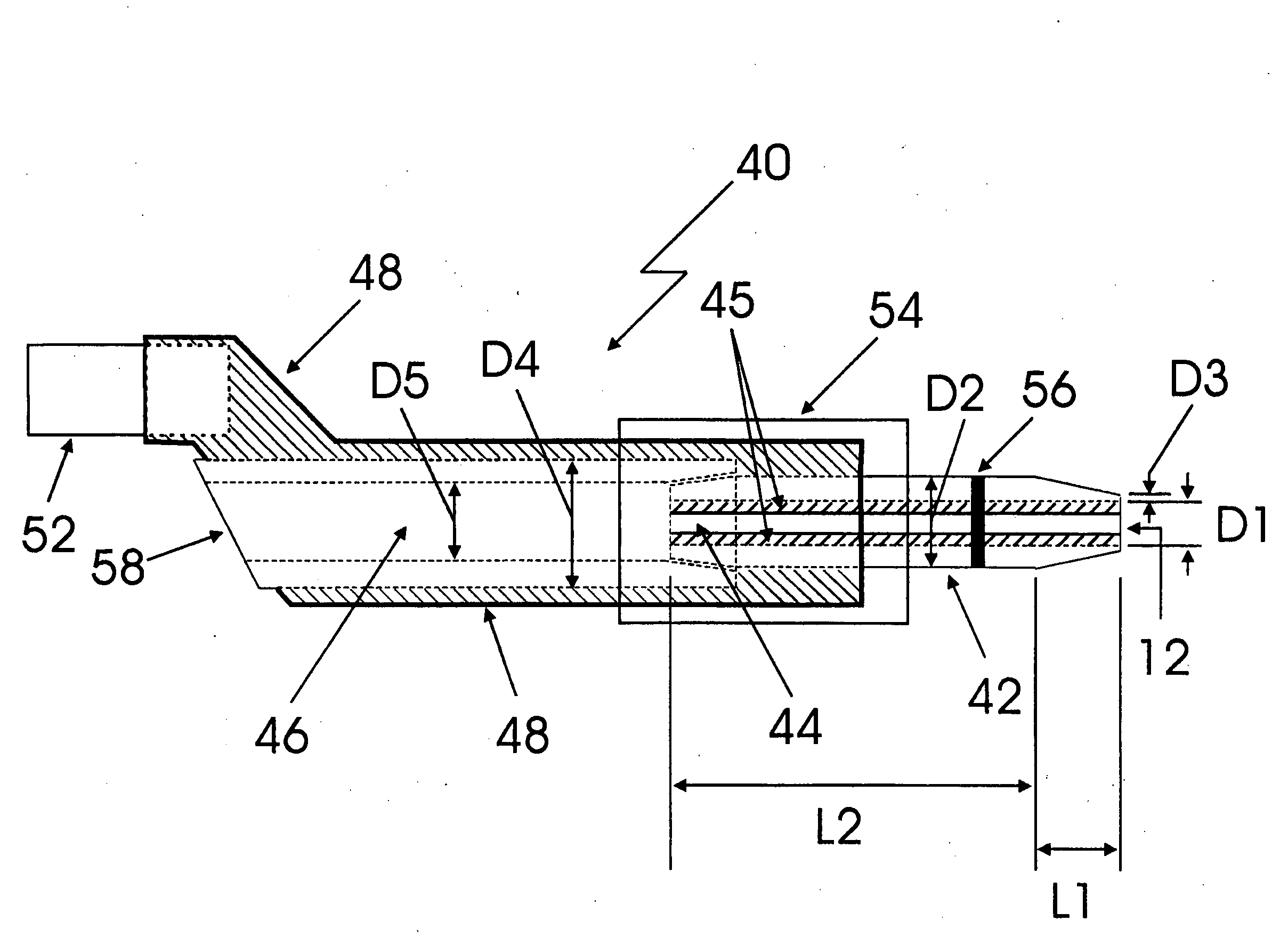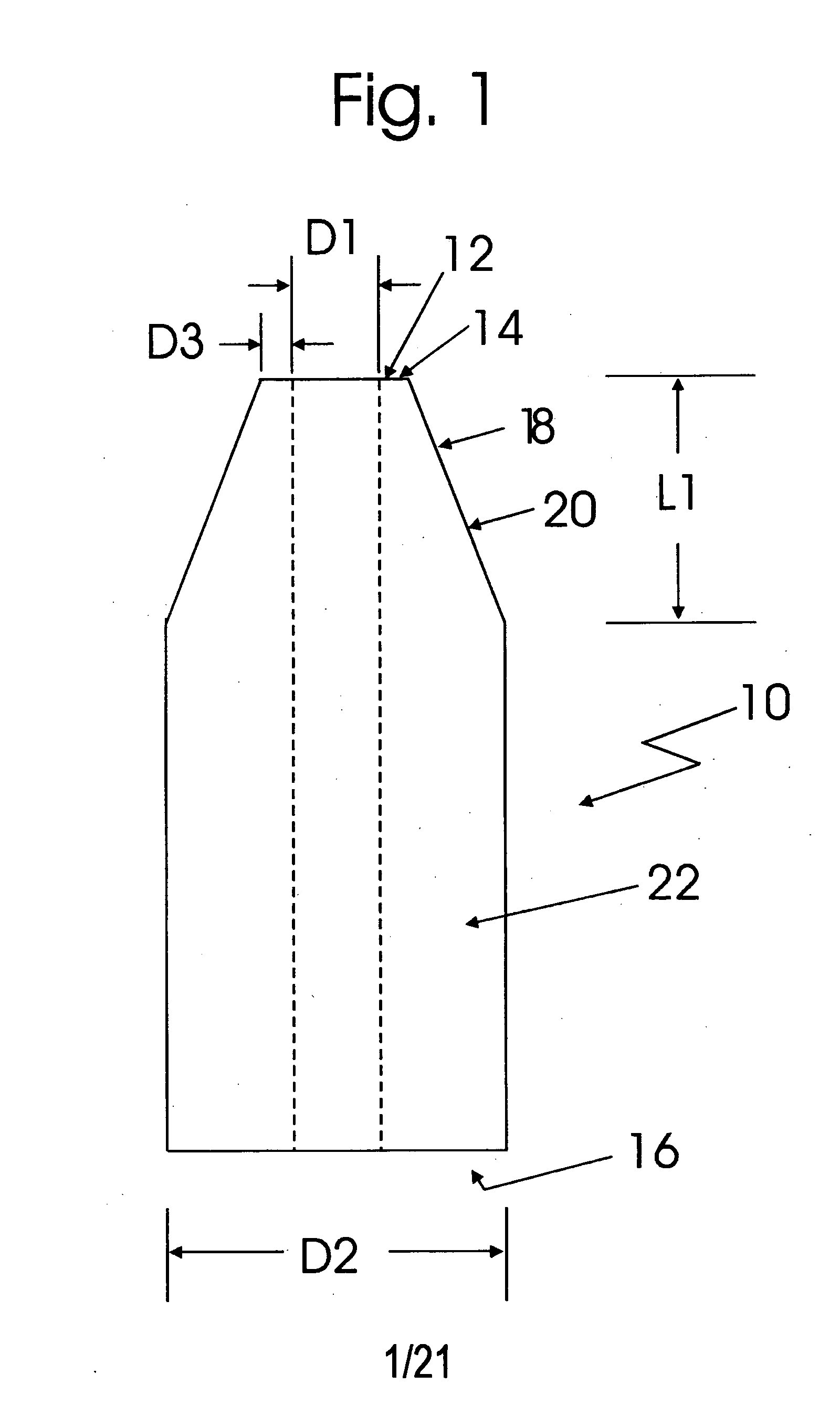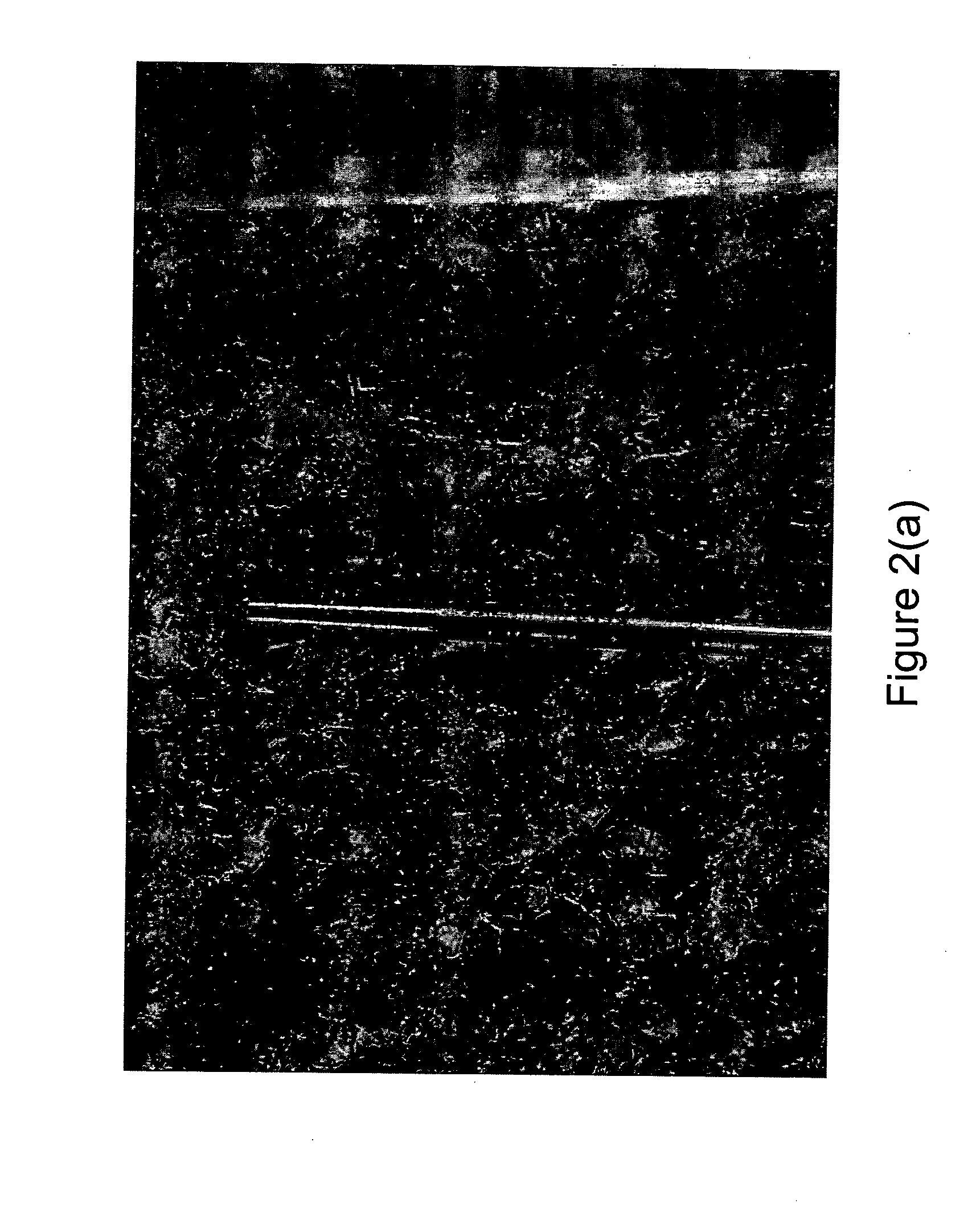Guide-wire sleeve for facilitation of lesion crossing
- Summary
- Abstract
- Description
- Claims
- Application Information
AI Technical Summary
Benefits of technology
Problems solved by technology
Method used
Image
Examples
first embodiment
[0090]Photographs of the first embodiment sleeve are shown in FIGS. 2(a) and 2(b).
[0091]A second embodiment sleeve 30 is shown in FIG. 3. The diameter, D1, of the guide-wire lumen is 0.017 inches and the maximum outer diameter D2 of the sleeve is 0.024 inches. The thickness, D3, of leading edge 32 is 0.001 inches, as with the first embodiment. The leading tapered surface 34 has a length, L1, of 0.100 inches. This is followed by an intermediate section of constant cross-section having an outer diameter, D4, of 0.022 inches and length, L2, of 12 inches. This is followed by a second tapered surface 36 having a length, L3, of 0.300 inches, followed by the proximal portion of constant cross-section having a length, L4, of 43 inches.
third embodiment
[0092]A third embodiment device 40 for use with a monorail delivery system, is illustrated in FIG. 4. In a monorail style catheter, the lumen for the guide-wire extends through only a distal portion of the catheter, typically from a distal tip aperture to a proximal aperture formed in the side wall of the catheter body. As the catheter is advanced over the pre-positioned guide-wire, the proximal end of the guide-wire will emerge from the side wall aperture such that the proximal portion of the guide-wire remains outside of the catheter body as the catheter is advanced to its desired operative site. The length of the catheter that must be passed over the guide-wire is lessened in the monorail type of arrangement making it generally easier for the operator to manually stabilize the guide-wire.
[0093]Sleeve 42 again includes nitinol tubing having an inner diameter D1 of 0.017±0.0005 inches and an outer diameter at its thickest point, D2, of 0.022±0.0005 inches. The outer diameter D3 of ...
PUM
 Login to View More
Login to View More Abstract
Description
Claims
Application Information
 Login to View More
Login to View More - R&D
- Intellectual Property
- Life Sciences
- Materials
- Tech Scout
- Unparalleled Data Quality
- Higher Quality Content
- 60% Fewer Hallucinations
Browse by: Latest US Patents, China's latest patents, Technical Efficacy Thesaurus, Application Domain, Technology Topic, Popular Technical Reports.
© 2025 PatSnap. All rights reserved.Legal|Privacy policy|Modern Slavery Act Transparency Statement|Sitemap|About US| Contact US: help@patsnap.com



